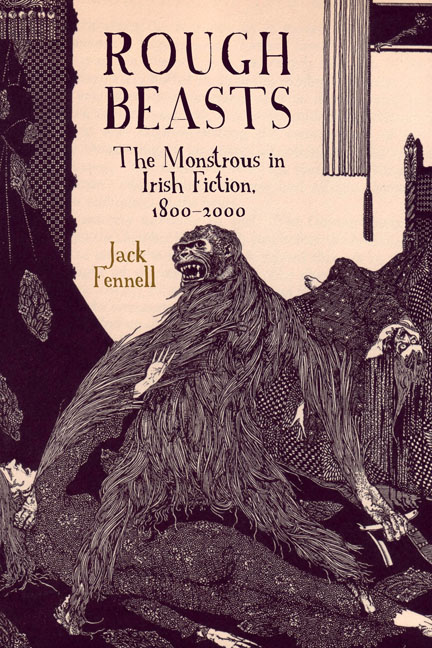Book contents
- Frontmatter
- Contents
- Acknowledgements
- 1 Introduction: In Defence of Fear
- 2 We Dare Not Go A-Hunting: Fairies, Deep Time, and the Irish Weird
- 3 Harbingers of Hunger: Famine, Cannibalism, and Hunger-Demons
- 4 From Lore to Law: Malevolent Magic and Spiritual Warfare
- 5 Ghosts, Narrative, and Noumenal Reality
- 6 Just Sign Here: Faustian Pacts, Demons, and Chaos
- 7 The Undead Generations: Zombies, Vampires, and the Corporeal Undead
- 8 Breeding Breaks Out: Shape-Shifters, Cryptids, and Cunning Animals
- 9 Haunted Spaces and Monstrous Lairs
- 10 Conclusions
- Bibliography
- Index
9 - Haunted Spaces and Monstrous Lairs
- Frontmatter
- Contents
- Acknowledgements
- 1 Introduction: In Defence of Fear
- 2 We Dare Not Go A-Hunting: Fairies, Deep Time, and the Irish Weird
- 3 Harbingers of Hunger: Famine, Cannibalism, and Hunger-Demons
- 4 From Lore to Law: Malevolent Magic and Spiritual Warfare
- 5 Ghosts, Narrative, and Noumenal Reality
- 6 Just Sign Here: Faustian Pacts, Demons, and Chaos
- 7 The Undead Generations: Zombies, Vampires, and the Corporeal Undead
- 8 Breeding Breaks Out: Shape-Shifters, Cryptids, and Cunning Animals
- 9 Haunted Spaces and Monstrous Lairs
- 10 Conclusions
- Bibliography
- Index
Summary
There have always been spaces where humans cannot go and areas that we cannot exploit for our own material gain. Human cultures have filled these inaccessible places with monsters, mostly because human nature abhors a vacuum. In texts where monstrosity is considered a moral category, entry into monstrous spaces is ritualised, with the human visitor often obliged to prove that he or she is worthy of admission with a demonstration of supernatural power or of moral turpitude. When monstrosity is the sum of a number of biological traits, on the other hand, the monster's habitat is dictated and structured by their physical needs, which sometimes leads to the emergence of monstrous ‘ghettoes’ (Fennell 2014a, 215). The places these supernatural antagonists inhabit are as much part of their identity as their corporeal or spectral being; as Gilmore puts it, a common characteristic of monsters such as Dracula and Frankenstein's creature is that they “dwell in dark border places, from which they launch attacks on ordered society” (Gilmore 65). The concept of the border place, and the spatial practices associated with territoriality, have obvious relevance for Irish cultural history.
Each chapter of this book thus far has considered an Object of fear, most of which have a pronounced spatial aspect beyond their simple monstrous presence. As mentioned in Chapter 2, the fairies’ “skin” is the visible world, according to Yeats, and they have left their mark on the Irish countryside in the form of fairy forts, fairy rings, fairy trees, and so on – landmarks that are considered taboo in Irish folk tradition. One could even incur the fairies’ wrath without being aware of their presence, as in a Donegal tale from the Schools Folklore Scheme, in which vengeful fairies keep killing a farmer's calves because his wife throws her dishwater out into a ditch the wee folk have claimed for themselves (1031, 29). As recently as August 2017 the persistence of fairyrelated territorial taboos was demonstrated when a County Kerry TD, Danny Healy-Rae, publicly blamed recurring problems with the N22 national primary road on the presence of fairy forts in the townland of Curraglass, explaining that “there was something in these places that you shouldn't touch”. Healy-Rae had previously raised fairy activity as a possible explanation at a Kerry County Council meeting in 2007 (“Danny Healy-Rae claims fairy forts caused dip in Kerry road”, Irish Times 8 August 2017).
- Type
- Chapter
- Information
- Rough BeastsThe Monstrous in Irish Fiction, 1800–</I>2000, pp. 211 - 235Publisher: Liverpool University PressPrint publication year: 2019

